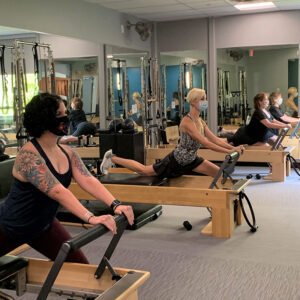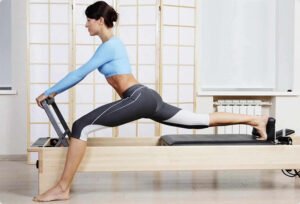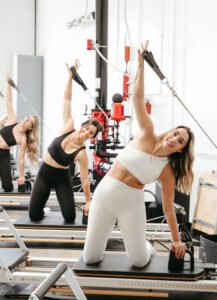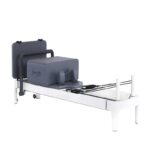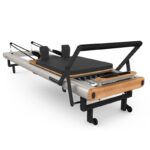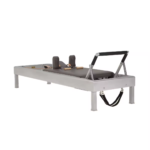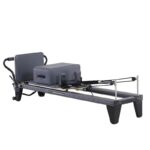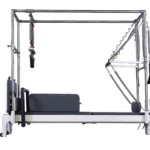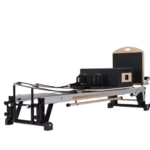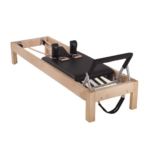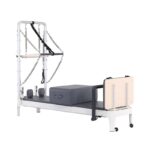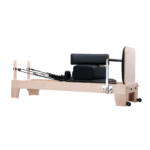The spine is the central axis of the human body, and its alignment directly affects our posture, body balance, and overall health. However, factors such as poor posture, sedentary lifestyles, and aging in the modern lifestyle can lead to spinal problems. As a full-body training method, Pilates has a unique advantage in improving spinal health. This article will explore how to determine if the spine is imbalanced, how long it takes to realign the spine, the impact of Pilates on the lower back, and whether Pilates or yoga is better for scoliosis. We will also introduce how to choose the right Pilates equipment for the home environment.

How to determine if the spine is imbalanced
Spinal imbalance may manifest in a variety of symptoms, including but not limited to back pain, uneven shoulders, pelvic tilt, or abnormal gait. If you suspect that you have a problem with your spine, you can perform a preliminary self-examination in the following ways:
Mirror test: Stand facing a mirror and observe whether your shoulders are on the same level, your head is centered, and the sides of your pelvis are symmetrical.
Palpation: Gently press the muscles on both sides of the spine to feel for obvious tension points or pain areas.
Functional testing: Try simple bending and twisting movements, noting if one side is more restricted than the other.
Of course, these methods can only provide basic reference information. If you find obvious asymmetry or other discomfort, it is recommended to consult a professional medical provider as soon as possible for an accurate diagnosis.
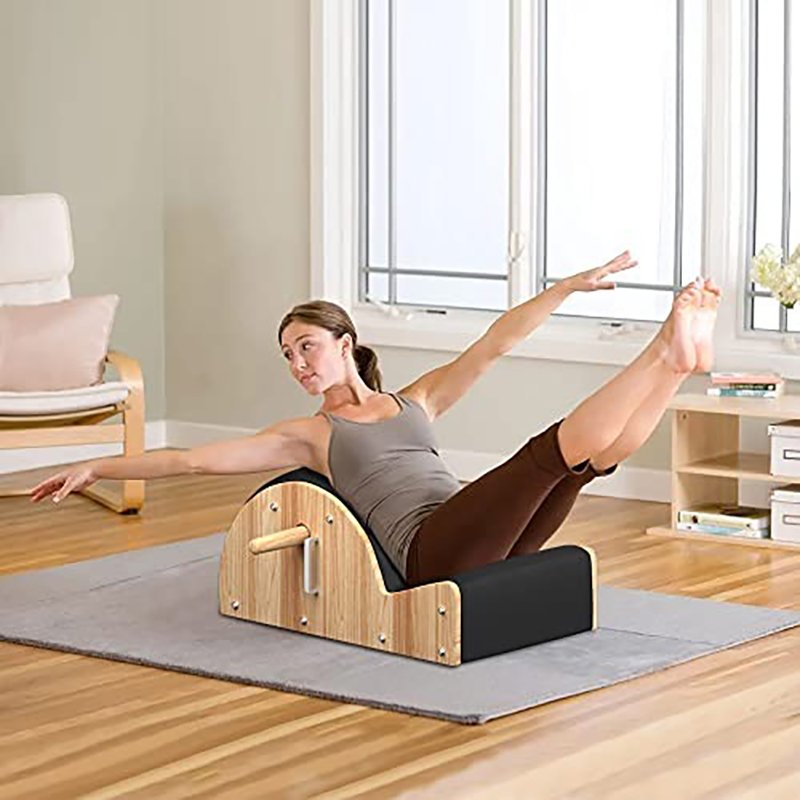
The effect of Pilates on the lower back
Pilates is known for its core muscle strengthening, which is essential for supporting a healthy spine. When the core is strengthened, it can better distribute the body’s weight and reduce the pressure on the lower back. However, not all Pilates exercises are suitable for everyone. Especially those who already have lower back pain should consult a doctor or physical therapist before starting a new exercise program. Choosing gentle and targeted movements, such as “bridge pose” and “hundred claps”, and avoiding overstretching or twisting movements can help improve lower back stability safely and effectively.
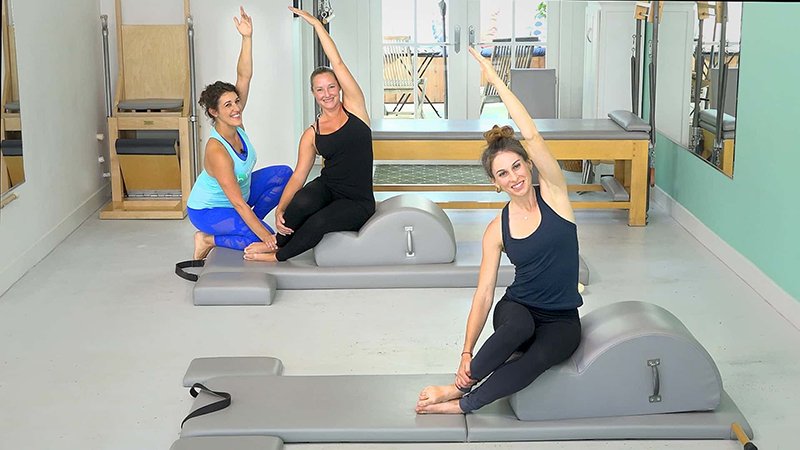
Scoliosis patients: Pilates or yoga?
For people with scoliosis, it is important to choose an exercise that can relieve symptoms while promoting overall health. Pilates and yoga are both good choices, but they have different focuses:
Pilates emphasizes core stability and muscle balance development, and uses a series of carefully designed movements to strengthen the weaker side muscles and relax the tight side. This targeted training helps improve spinal curvature and relieve related discomfort.
Yoga focuses more on the mind-body connection and breath control. Many postures can help stretch tight muscles and increase joint flexibility. In addition, some specific types of yoga classes have been modified specifically for scoliosis.
Overall, both can be used as part of auxiliary treatment. The key is to choose the method that best suits your needs according to your own situation and practice under the guidance of professionals.
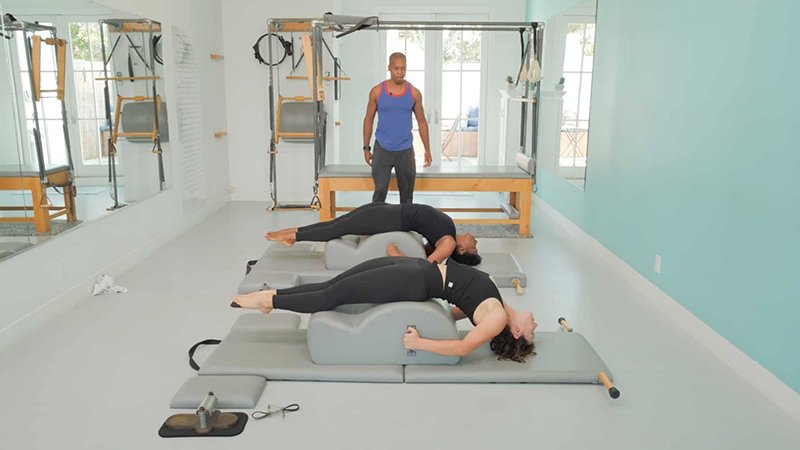
Create an ideal Pilates space at home
To enjoy a high-quality Pilates experience at home, please refer to the following suggestions to purchase the necessary equipment:
Home Pilates fitness equipment: In addition to the basic Pilates floor mat, you can also consider adding a Pilates mat with foot rings and handles, which can make it easier to perform various movements.
Pilates Reformer: If conditions permit and you want to explore the world of Pilates in depth, a compact Reformer will be an excellent investment. It not only provides a variety of training options, but also significantly improves the efficiency of exercise. Don’t forget to purchase the matching Reformer neck pillow to ensure comfort and support.
Ball racks and other accessories: In order to fully utilize the benefits of small props such as fitness balls, you may want to prepare a stable ball rack for them. In addition, there are many other practical gadgets such as Pilates circles and small balls that are worth having.
Home Pilates equipment sales: There are many brands on the market that provide consumers with various grades of home Pilates equipment. When purchasing, please be sure to pay attention to product quality and safety standards, and try to choose a brand with a good reputation and perfect after-sales service.
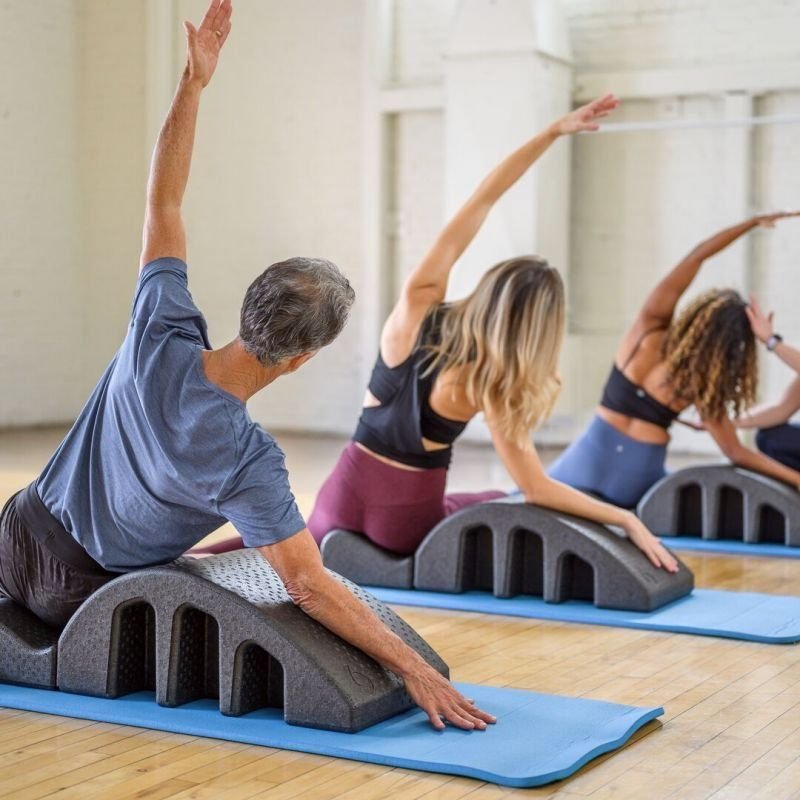
Conclusion
Whether you want to use Pilates to solve existing spinal problems or just want to find a new way to stay healthy, the proper use of this sport’s unique techniques will bring unexpected benefits. Remember, while pursuing a strong spine, don’t ignore the fun of the whole process – only when you really love this sport can you get the most benefit from it! Through reasonable self-examination, timely professional consultation and appropriate equipment, everyone has the opportunity to start a wonderful fitness experience journey.

